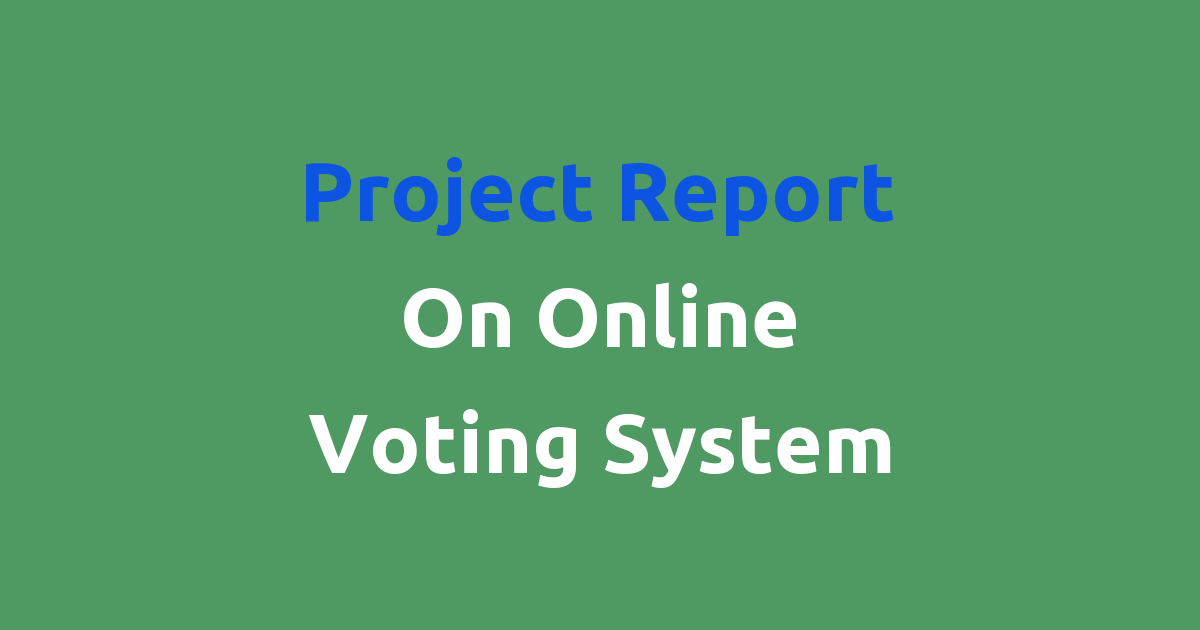Report on implementing an online voting system.
Project Report on Online Voting System
Introduction
Online voting system is an emerging technology that aims to simplify the voting process by allowing voters to cast their votes online through a secure platform. This system has the potential to revolutionize the way elections are conducted by providing a convenient and efficient way for people to participate in the democratic process. This project report will analyze the existing voting system, identify its shortcomings, and propose a new and improved online voting system.
Problem Statement
The traditional voting system has several shortcomings that make it inefficient and prone to errors. Paper ballots can be tampered with, lost, or miscounted, leading to inaccuracies in the election results. In addition, the physical polling stations are often crowded, leading to long wait times and inconvenience for voters. There is also a lack of accessibility for people with disabilities, who may struggle to cast their votes in person.
Existing System
The existing voting system involves manual processes such as paper ballots, physical polling stations, and manual vote counting. This system is time-consuming, labor-intensive, and prone to errors. It also requires a large workforce to manage the voting process, leading to high operational costs for the government.
Disadvantages
– Paper ballots can be tampered with or lost, leading to inaccuracies in the election results.
– Physical polling stations are often crowded, leading to long wait times and inconvenience for voters.
– Lack of accessibility for people with disabilities.
– High operational costs due to the need for a large workforce to manage the voting process.
– Potential for human error in the manual vote counting process.
Proposed System
The proposed online voting system aims to address the shortcomings of the existing system by providing a secure, convenient, and efficient platform for voters to cast their votes. This system will be accessible to all voters, including those with disabilities, and will eliminate the need for physical polling stations. Votes will be encrypted and stored securely to ensure the integrity of the election results.
Advantages
– Secure and tamper-proof voting process.
– Convenient and accessible for all voters.
– Elimination of physical polling stations, reducing operational costs.
– Efficient and accurate vote counting process.
– Increased voter turnout due to the convenience of online voting.
Features
The online voting system will have the following key features:
– Secure login for voters to ensure the authenticity of their votes.
– Encrypted votes to prevent tampering.
– Accessibility features for voters with disabilities.
– Real-time monitoring of voting process.
– Automated vote counting to ensure accuracy and efficiency.
Conclusion
In conclusion, the online voting system has the potential to revolutionize the way elections are conducted by providing a secure, convenient, and efficient platform for voters to cast their votes. By addressing the shortcomings of the existing system and leveraging technology, we can create a more inclusive and democratic voting process. This project report has proposed a new and improved online voting system that will benefit both voters and government agencies.

